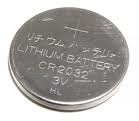More Lithium!
Do we care about lithium reserves in Afghanistan?
Last week a New York Times report, commented on here at OTB, that significant reserves of lithium had been discovered in Afghanistan, got quite a bit of attention. Many (including me) wondered about the timing of the report.
What didn’t get enough attention IMO is whether lithium reserves in Afghanistan are particularly interesting to us. Let me give you a few reasons they may not be.
According to the U. S. Geological Survey (pdf), the top five lithium-possessing countries in declining order of reserve base are:
| Country | Annual production (tonnes) |
Reserves | Reserve Base |
| Bolivia | – | – | 5,400,000 |
| Chile | 8,000 | 3,000,000 | 3,000,000 |
| Argentina | 2,000 | 2,000,000 | 2,000,000 |
| China | 3,000 | 540,000 | 1,100,000 |
| Brazil | 475 | 190,000 | 910,000 |
Argentina’s reserves and reserve base are estimated. The U. S. is rather coy about its lithium reserves, presumably both for proprietary and security reasons. Our reserve base is estimated to be around 410,000 tonnes and, based on our consumption, we should be able to maintain lithium independence for many years into the future if we cared to.
The discoveries in Afghanistan would place Afghanistan’s reserve base right up there with Bolivia.
If we were going to select an impoverished, landlocked country as a major supplier of lithium, would we be more likely to select Afghanistan or Bolivia? Bolivia is about 4,000 miles away; Afghanistan is about 7,000 miles distant. The dominant language in Bolivia is Spanish. We have millions of Spanish speakers in the United States. The dominant language in Afghanistan is Dari, a dialect of Iranian (Pashtun is another dialect of Iranian). Industry might be able to ferret out a few Dari speakers in the United States or, possibly, hire them away from the military.
Bolivia although landlocked is connected by rail with all of its neighbors, albeit with some complications caused by differences in gauge. Afghanistan does not have meaningful rail connections with any of its neighbors.
Fewer than half of Afghan men are literate. The literacy rate among Afghan women is lower, almost half that. More than 85% of Bolivians are literate.
Afghanistan may well have untold mineral riches. They are likely to stay there for the foreseeable future. The level of capital investment that would be required to mine it, transport it, and secure it would be vast. There is no international spot price for lithium but the cost of lithium (lithium carbonate) per tonne is around $6,000-$7,000. A tonne of lithium is a lot of lithium. Why bother?







Since lithium is a commodity traded on a world market, it really doesn’t matter where the U.S.’s lithium supply comes from – the main factor determining the price is global supply. By analogy to oil, a tiny proportion of the oil consumed in the U.S. is actually produced in the Middle East, but the supply of oil from the Middle East nonetheless affects oil prices in the U.S. because the people who DO get their oil from the Middle East would be able to substitute Venezuelan or Nigerian oil for Saudi crude.
Similarly we might expect that countries like India and China might get their lithium from Afghanistan in the future (due to lower transportation costs) but supply problems from Afghanistan would still affect U.S. prices for lithium even if very little comes from there. (Not to mention that the batteries etc. for products imported from Asia are usually produced in Asia.)
The lithium will be used to power millions of cars in America that were manufactured in China.
This find is likely to affect China more than us, maybe India also. China does share a border with Afghanistan, but there is no road crossing the border and few have ever crossed it if my readings are accurate (researched it a while ago). What it may do is spur China to become involved in Afghanistan. If it spurs India to do so and the Afghans accept their offers I would look for Pakistan to more actively support the Taliban or some new group of insurgents.
Steve
Afghanistan will probably never produce lithium due to it’s nature. We will bet lithium from sea ater before we ever get it from Afghanistan. Bolivia is almost as bad a source. Impoverished and land locked, it’s government “will not” allow mining companies to exploit that resource. Couple that with the fact that Bolivia’s lithium resource is peppered with magnesium (making it much more difficult to produce) and that country also becomes an “also ran” or a “never ran”.
There is a reason that Chile is currently the top producer of lithium worldwide. A mining friendly country with lithium deposits located in salars or “salt lakes” from which Li is extracted much more easily than from hard rock sources, in one of the most arid areas of the planet ( very positive for lithium production as the sun does all the work).
If you are an investor, Chile is where lithium comes from, so don’t be distracted by all the hoopla about Afghanistan or Bolivia, unless, of course, you intend on losing your money.